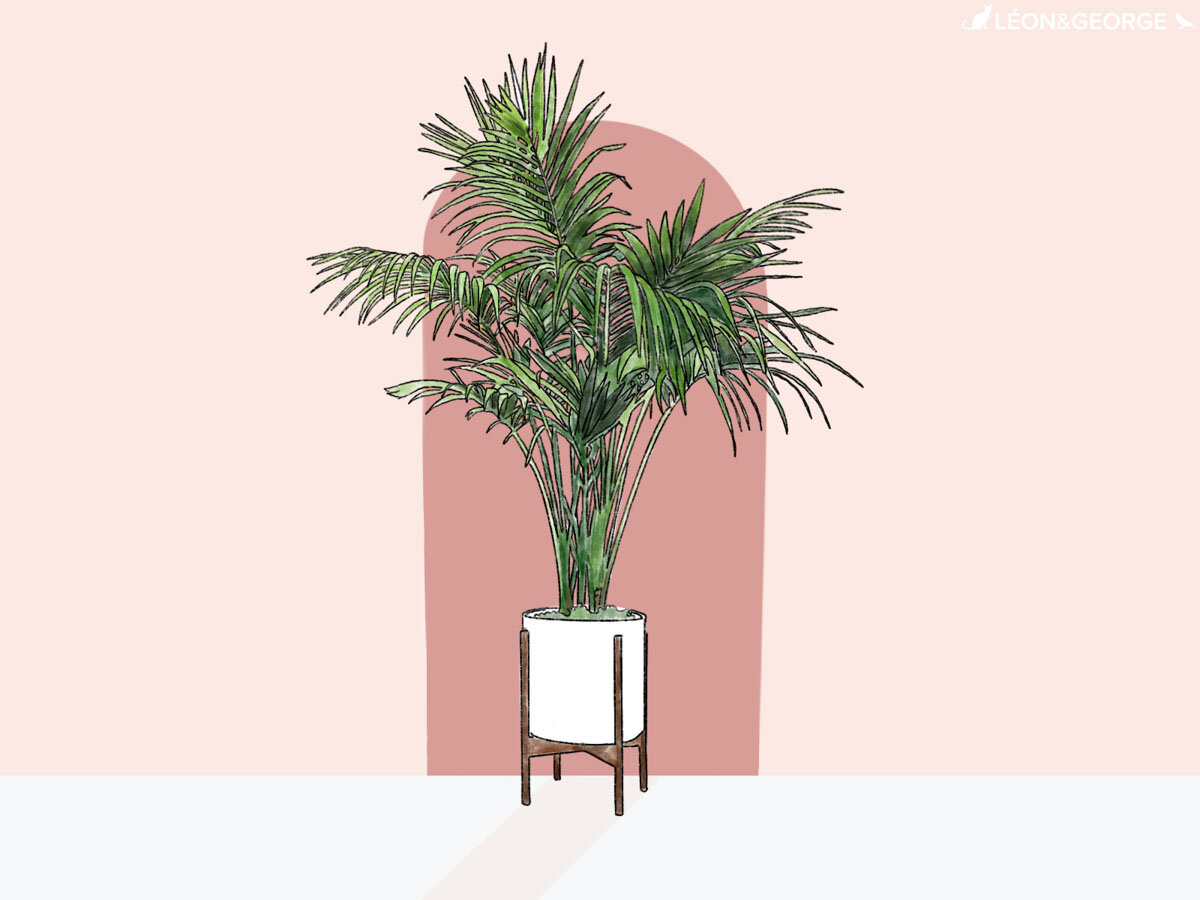Kentia Palm Care Guide: Everything You Need To Know
Tall, full, and majestic, the Kentia Palm is known for its lush fans of foliage and tropical island vibes. An excellent air purifier, this popular houseplant is a slow grower which blossoms new fronds from the center of its narrow trunk. Though the Kentia Palm is a relatively easy plant to care for, it does require a certain set of conditions to thrive. Read on to find simple care tips and solutions for how to successfully care for and grow a Kentia Palm.
How much light do Kentia Palms need?
This plant prefers medium to bright indirect light, but can adjust to medium-low light. Keep in mind that it will scorch in direct sunlight.
How to water your Kentia Palm
Keep the just slightly moist — water when the top 1-2 inches of soil is dry. When watering, take care not let the plant become oversaturated or waterlogged, and regularly mist to boost humidity levels.
How fast does the Kentia Palm grow?
The Kentia Palm is a slow grower and will take many years to reach the majestic heights it’s known for. Fertilize your Kentia Palm 1-2 times per month in the spring and summer with indoor plant food, and consider foliar feeding year round.
Common problems with the Kentia Palm
Yellow leaves - overwatered
Symptom - yellowing leaves
Cause - too much water, potential root rot
Remedy - Allow the soil to air out (aeration could help for minor cases) or change the soil entirely to reduce the risk of root rot. You may cut the yellow leaves off at the base.
Brown tips- underwatered
Symptom - leaves turning yellow or brown at the tips
Cause - most likely underwatering, but could also be a result of too much fertilizer
Remedy - Be sure to keep a consistent watering schedule to ensure the plant’s soil does not dry out too much between waterings. You may also mist the plant weekly to boost moisture levels, and make sure it is not placed near any air vents, heaters, or air conditioners.
Heavily drooping leaves - overwatering or underwatering
Symptom - fronds drooping more so than usual
Cause - overwatering or underwatering
Remedy - Depending on your watering schedule, this could be either! If you suspect it’s underwatering, take your plant out of its decorative pot and place outside or in a bathtub or shower to give it a deeper watering, allowing all the roots to drink evenly. For overwatering, follow the instructions above.
How to maintain a beautiful and healthy Kentia Palm
Take care of your Kentia Palm and it will take care of you! Below are simple tips to continue caring for and growing your Kentia Palm over time.
Pruning your Kentia Palm
Kentia Palms don’t love to be tampered with too much. If you have yellowing or old fronds, you may cut them at the base with clean, sharp pruning shears. Otherwise, avoid pruning.
Cleaning your plant
Take each frond between two soft tissue cloths and wipe off the top to reveal a healthy shine (also helps the plant soak in more light!). Regularly misting will also help to keep your plant clean and dust-free.
How to repot a Kentia Palm
Avoid repotting the Kentia Palm unless absolutely necessary (risk of root rot, for example). Kentia Palms have delicate roots and do not like to be repotted.
When to repot - Only when your plant is at risk of root rot
Pot sizing - if you want your plant to grow wider, find a nursery pot that’s 2” in diameter larger than the current pot. If you want your plant to stay the same size, you can reuse the same pot and simply change the soil.
Get your hands dirty - spread out newspaper on the floor, remove the plant from the pot and shake off as much of the old soil as possible so that you have clean roots. Be gentle with the delicate root ball! Place the plant in the center of the pot, add new soil and pat down firmly. Water the soil thoroughly and place the plant in an area with bright indirect light. Your plant will take 2-4 weeks to settle from the shock and adjust to its new home.
How to propagate the Kentia Palm
The only way to propagate a Kentia Palm is by germinating the seeds. However, this is incredibly difficult to achieve indoors, and unfortunately, propagating is best left to growers.
Illustrations by our talented plant stylist, Kailie Barnes
Indoor plants, potted & delivered
Premium plants paired with stylish ceramics, plus lifetime plant care support. Order online at leonandgeorge.com





